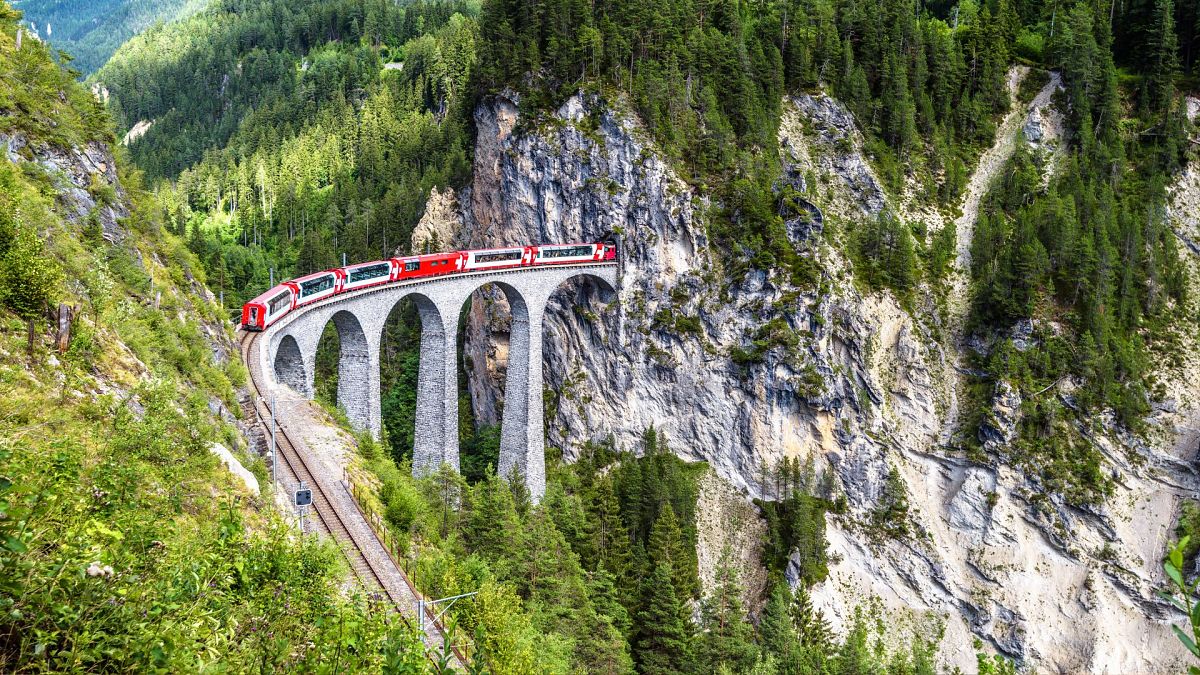Ready for some summer fun in America’s national parks? So is everyone else.
With vacation season in full swing, throngs of your fellow tourists will be winging their way toward fruited plain, purple mountain majesty and all the rest.
Last year alone, a whopping 119 million outdoor lovers descended upon these natural treasures — coming from all over the globe.
Unfortunately, this means that travelers seeking a scenic respite from the urban rat race will likely be greeted by a similar scrum this year.
Or, will they? Experts say that even at America’s 10 most popular national parks, there are always times to visit for those looking to avoid the tournami.
To pinpoint these more tranquil times, QR Code Generator analyzed visitor data sourced from the National Park Service from 2019 to 2024 — identifying patterns in each of the crowded natural attractions.
In general, January and February are the quietest months for most parks, their report revealed — often with fewer than 20% of peak season visitors, who generally flocked to these hotspots in July and August.
“Peak season usually exists for a reason—it’s usually when the park offers the best conditions for sightseeing and exploring, with incredible visuals,” said Marc Porcar, CEO of QR Code Generator PRO S.L.
“But visiting extremely popular touristic locations during off-peak times also has its advantages: not only are they emptier, but they also have different and unique sights that most people miss on,” he noted.
Great Smoky Mountains National Park
Ain’t no mountain high enough to keep tourists from getting to you at Great Smoky Mountains National Park, the most popular national park in the US, with 140.9 million visitors over the past six years — 77 million (55%) of which are recreational, as opposed to those just passing through.
The least packed month in the park — which spans Tennessee and North Carolina — is January with an average of 456,292 recreational visitors, followed by February with 477,802, and December in third with 758,578.
The report stated that “some facilities and roads may be closed due to weather, so it’s best to check ahead before planning your trip.”
Meanwhile, visitors should steer clear of the mist-wreathed mountains in June and October, as each month sees an average of 1.6 million recreational tourists, while July and August proved some of the hottest months for visitors.
Yellowstone National Park
Fear of a volcanic eruption hasn’t deterred visitors from making annual pilgrimages to the “Wonderland,” which placed second with a veritable geyser of 32.7 million visitors in the past six years, 25 million of them recreational.
The best off-peak months are November and December, which boast an average of 21,972 and 31,311 recreational visitors respectively, followed closely by March, with an average of 32,554. Tourists are also less likely to encounter some bozo getting buffeted by a bison for getting too close.
Due to frigid weather and heavy snowfall, some areas may be inaccessible during these months, so it’s worth procuring proper gear and hiring a guide.
Grand Teton National Park
Coming in third with over 29.4 million visitors — 20 million recreational — was Grand Teton National Park, just next door to Yellowstone. December and February offer the most solitude, with 50,102 and 54,199 average recreational visitors, respectively.
January is also a fairly tranquil time, with an average of 57,265 recreational visitors, but those who prefer warmer weather should go in April, which is also relatively peaceful with an average of 59,690 monthly visitors.
Grand Canyon National Park
Placing fourth was the US’ most famous natural wonder, which garnered over 27.8 million visitors over the past six years, nearly all recreational.
Finding solitude in this jewel of Arizona is a tall order, but crowd-averse pilgrims are best off visiting in January and February, when the chilly canyon sees an average of 187,790 and 193,746 recreational visitors, respectively.
Zion National Park
This Southwest Utah wonder placed fifth, attracting 27.5 million visitors over the past six years, almost all of them for recreational reasons.
Thankfully, Zion is a bit more desert-ed in January and February, with an average of 187,790 and 193,746 recreational visitors, respectively.
Despite the cold — and the fact that some red rocks may be capped with snow — most of the popular routes remain accessible during these times.
Saguaro National Park
Welcoming over 27.4 million visitors — including 5.7 million recreational — over the past six years, Arizona’s city of cacti, just outside of Tucson, is the sixth most popular National Park in the US.
Unlike with other parks, fewer people visit during the summer months because of the sweltering desert temps, meaning these are the best times to make a pilgrimage.
Sightseers looking to beat the crowds — if not the heat — should visit in July and August, which boast an average of 36,780 and 36,982 visitors per month respectively,
Saguaro’s busiest times are February and March, with an average of 138,420 and 155,440 monthly visitors.
Rocky Mountain National Park
This alpine Colorado wonderland placed seventh among these national treasures, with over 25 million visitors over the last six years.
January and February both see relative lulls in recreational visitation with 124,005 and 111,285 travelers, respectively, trailed closely by December, with 127,838 recreational visitors.
During these winter months, Rocky Mountain National Park becomes a postcard-worthy snowscape that’s ideal for snowshoeing and wildlife watching.
Yosemite
Welcoming over 22.5 million visitors during the studied period (over 21 million of them recreational), this rock climber’s paradise is the eighth most-traversed National Park in the country.
Visitors seeking some solo travel — if not free solo — should hit up Yosemite in January and March, when the park welcomes 114,812 and 131,764 recreational guests respectively.
The runner-up quietest month is February, with 134,317 visitors.
Acadia National Park
The crown jewel of The North Atlantic coast attracted almost 22.3 million tourists during the over half-decade, putting it in 9th place in the rankings.
February, January, and December rank as the least visited months, averaging just 13,522, 13,768, and 16,807 visitors respectively—the one caveat being that facilities close and roads may be impassable during this time.
For milder weather and fewer crowds, National Park pilgrims should go in March and November, which see 27,626 and 69,567 tourists per month, respectively.
Olympic National Park
Rounding out the top ten was the home of Washington State’s resplendent temperate rainforest, with over 22.2 million visitors over the past six years.
If you want to skip the crowds, go in January and February, when Olympic National Park is visited by an average of 76,294 and 83,455 recreational tourists respectively.
In addition to allowing tourists to sight-see in relative solitude, visiting national parks during their off-peak season also helps them “alleviate overcrowding” during the busy season, “contributing to sustainable tourism practices,” said Porcar.













